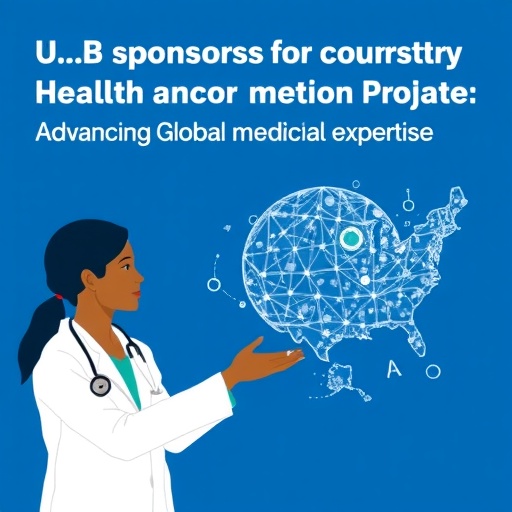In a groundbreaking analysis of the U.S. healthcare workforce, recent data has revealed that over 11,000 physicians were sponsored for H-1B visas in the fiscal year 2024, marking a critical reliance on international medical professionals within the nation’s healthcare system. This number, although representing only about 1% of the total U.S. physician workforce, underscores a significant trend in the sourcing of highly skilled labor from abroad to meet continuous demand, particularly in underserved regions.
The H-1B visa program, which permits U.S. employers to hire foreign workers in specialty occupations, has increasingly become pivotal in addressing the physician shortage that challenges many parts of the country. Physicians on H-1B visas bring advanced specialty training and diverse clinical experience that enrich the American healthcare system. Yet, this infusion also points to the systemic gaps in domestic medical training capacity and distribution that require closer scrutiny.
Interestingly, the geographic disparities in visa sponsorship reveal deeper social and economic dynamics affecting healthcare accessibility. The percentage of H-1B–sponsored physicians is nearly double in rural counties compared to their urban counterparts, reflecting the persistent difficulty rural areas face in attracting and retaining qualified healthcare professionals. This disproportionate reliance on foreign-trained physicians in rural communities highlights the role these individuals play in bridging critical healthcare delivery gaps.
Moreover, when examining socioeconomic factors, the disparity becomes even more pronounced. Counties classified in the highest-poverty brackets rely on nearly four times the share of H-1B–sponsored physicians compared to wealthier regions. This stark contrast hints at a complex intersection between economic deprivation and healthcare provision, raising urgent questions about how immigration policy intersects with public health equity initiatives.
While physicians constitute the largest group of H-1B visa holders in the healthcare sector, other professionals such as advanced practice providers – including physician assistants, nurse practitioners, nurse anesthetists, and nurse midwives – alongside dentists, podiatrists, chiropractors, and optometrists, also occupy these visa categories, though to a lesser extent. These healthcare workers collectively cover a broad spectrum of medical services, further diversifying the foreign-trained workforce addressing healthcare gaps.
Healthcare systems and policymakers must consider these patterns as part of a comprehensive strategy to improve healthcare access nationwide. The heavy dependence on visa-sponsored clinicians in vulnerable areas calls for enhanced domestic workforce planning, including support for medical education pipelines and incentives for providers to practice in underserved regions. The current visa-sponsored clinician distribution suggests that without concerted domestic interventions, reliance on foreign-trained workers may only increase.
From a technical standpoint, the rigorous training and credentialing processes that H-1B physicians must undergo before practicing in the U.S. ensure high standards of care despite their international backgrounds. These processes include passing licensing exams and often completing residencies within the country. Thus, their integration into the healthcare system not only supplements capacity but also maintains clinical quality and patient safety.
Further analysis is warranted to evaluate how policy shifts could affect this workforce segment. Changes in immigration regulations, visa caps, or residency funding could disrupt the delicate balance of provider availability in rural and impoverished regions. Healthcare administrators and public health officials need to anticipate these shifts and develop contingency strategies that safeguard healthcare delivery continuity.
The implications of these findings extend beyond workforce numbers. The reliance on foreign-trained medical professionals in specific locales reflects broader trends of healthcare inequality influenced by socioeconomic status and geography. Understanding how visa sponsorship correlates with community health outcomes can inform targeted interventions and resource allocations that improve overall population health.
This comprehensive examination, led by researchers affiliated with prestigious institutions, offers a clarion call for integrated approaches blending immigration policy, healthcare workforce development, and social determinants of health. The critical role played by H-1B–sponsored physicians in the American healthcare ecosystem, particularly in high-need areas, presents both opportunities and challenges that require nuanced, data-driven policy responses.
In sum, the dynamic of visa sponsorship among healthcare providers reveals pivotal insights into the contemporary forces shaping medical care availability in the United States. It accentuates the indispensable role of international medical talent while spotlighting persistent domestic disparities and systemic issues in healthcare access. Moving forward, these insights should galvanize coordinated efforts to fortify healthcare delivery through innovative and equitable workforce strategies.
As the U.S. grapples with evolving demographic and health demands, this study’s findings underscore the necessity of embracing a multifaceted approach that intertwines immigration, education, and public health policies. Such synergy will be essential to sustaining an adaptable and resilient healthcare workforce capable of meeting present and future challenges.
Future research should explore longitudinal impacts of H-1B visa policies on patient care quality, provider retention in underserved areas, and the broader economic implications within the health care industry. Ultimately, a holistic understanding of these elements will enable the design of robust frameworks that optimize the benefits of global medical talent while fostering enhanced healthcare equity across the nation.
Subject of Research: Analysis of H-1B visa sponsorship among physicians and other healthcare professionals in the United States, focusing on geographic and socioeconomic disparities.
Web References: Not provided.
References: (doi:10.1001/jama.2025.20931)
Keywords: Health care industry, physician workforce, H-1B visa, rural healthcare, healthcare disparities, socioeconomic factors, immigration policy, advanced practice providers, healthcare access, workforce planning.
Tags: advanced specialty training in medicinedomestic medical training capacity issuesforeign-trained physicians in Americageographic disparities in healthcareH-1B visa program for healthcare professionalshealthcare accessibility in rural areasinternational medical workforce in the USphysician shortage solutionsreliance on foreign labor in healthcaresocioeconomic factors in healthcare distributionsponsored physicians statistics 2024U.S. healthcare system challenges





